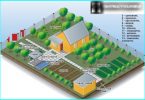
The climatic conditions of the Urals and Siberia is kept far from all cultivated plants. This creates some difficulties cottagers and owners of their own houses, living in the region. Many are afraid to buy for their plots interesting perennials, because they do not believe that they will survive the harsh winter. Therefore, limited only by lawns and annuals. But the Russian breeding is not in place, and annually in nurseries rionero new varieties of plants, which were previously considered unsuitable for this climate. So today you can pick and perennial flowers for Siberia, and ornamental shrubs to the Urals. But which ones are the most hardy and resistant to frost – take a closer look.
The contents
The unpretentious low-growing perennials
Low-growing plants is always appropriate in the landscape, because they can draw the edge of the lawn, front flower beds, to create living borders. If you perform great low-growing perennials to Siberia, then this list will include only some.
Contender #1 — primroses and snowdrops
Please flowering before all. I can’t stand the heat, but get along well in high humidity and cool. If in southern areas, these plants try to plant in the shade to over the summer is not fading roots, Siberians can be decorated with primroses absolutely any piece of land.
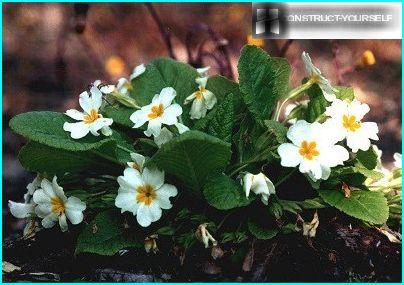
Primroses can be grown from seed planted in early March in containers on the windowsill or by dividing the bushes after the plants Bud
Contender #2 — the Lily
Are characterized by their ability to get along in any environment, adapting to the local climate. If to take for a Lily flower, the entire season will be decorative, as in may above the glossy dark green leaves crumble fragrant white flowers-bluebells and by August the place will be the red berries (poisonous!). Lily of the valley for the season pull the rhizome is 30 cm, so for a couple of years will delay the whole plot, which he’ll take. Even have to protect the edges of the flower pieces of slate to stop the spread of the roots. In one place, the flower can grow up to 40 years.
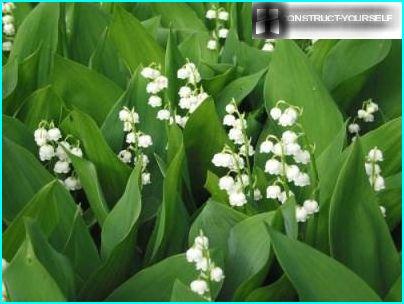
Planting Lily of the valley better to wait, if the house is small children because they are attracted to the beautiful color of poisonous berries
Contender #3 — viola tricolor (Pansy)
The plant is a biennial cycle of development, i.e. for the first year after emergence of seeds increases the above-ground part, and the following summer (June-August) happy bloom. Can reproduce by samasem, while Housewives prefer to breed in boxes. Suitable for mixed beds because the appearance of colors looks quite unattractive.
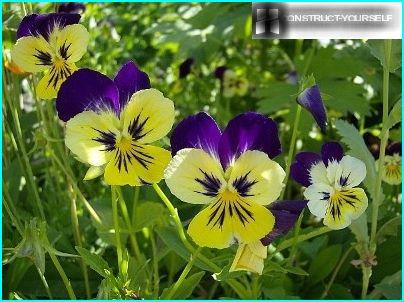
Pansy (or viola tricolor) first year grown a bunch in the far corner of the property, and in the second year are transplanted in the main flower garden
Contender #4 — Daisy
Very gentle miniature plant of the family Asteraceae. Meet annual and perennial species. More precisely, for perennials because they reckon that the cycle of flowering daisies such as pansies, and then she just nazivaetsa itself. Used for Alpine design, as blotches on the lawn, etc. in a free division of the daisies gradually run wild and become small. Therefore, the process of breeding better control from time to time to transplant and divide is too big bushes.
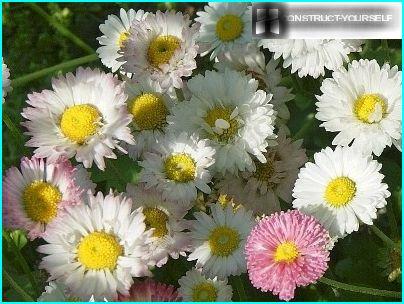
Daisies can arrange the thin strips of land on the lawn, creating a sort of white milk streams, because they are not afraid of cutting
Perennial flowers the second tier, up to half a meter
The second tier, i.e. for low-growing flowers, it is customary to plant the plants, the height of which reaches half a meter. Among these perennials that fit the Urals and Siberia, we can distinguish two groups: flowering and ornamental leaves.
Flowering plants
Perennials with bright colors differ in that they can’t be decorative all summer. As a rule, after flowering, the aerial part of the plant becomes inconspicuous and gradually dies to lay the flower buds for the new season. This is especially true of tuberous and bulbous, which thus protect themselves from excessive use of power. And yet, the bright weeks of flowering they give, so spectacular that every cottager trying to decorate your flower beds at least a couple of instances of such plants.
What from this list suited to the Siberian climate:
- Tulips. For cold climates is to take the varieties are early flowering. These include simple early and double early tulips. Both varieties begin to bloom in may, but in Siberia, this period may move for a fortnight ahead. Simple early tulips grow to 40 cm, double, up to 25 cm Require annual digging and drying that the bulbs have not been getting shallower.
- Daffodils. A child of two times, so call this flower because it is trying to bloom in the period when winter struggles with spring. Suitable for growing in cold climates because it requires annual digging, not freezes in the winter and undemanding to the soil. But the new bred varieties have very large flowers, which require indispensable of the garter. Thin stalks from the wind and rain can break in the midst of flowering.
- Iris mesh. An amazing perennial that is able to freeze solid cleaned and be reborn from one surviving kidney. Compared to the bearded irises is less common, but does not yield «older brothers» in ornamentalism. Between the thin, pointed like swords, the leaves may shoot high stalks with small, but numerous flowers. Thanks to its unusually bright blue-yellow, purple-white etc color are visible from afar. Can withstand heavy frosts, but do not like damp places. Therefore, they are not planted in the lowlands.
- Bearded iris. This group of plants is characterized as a beautiful fleshy leaves that do not lose their decorative until late autumn, and large flowers, pleasing to the eye from may to June. For the Urals and Siberia these flowers-perennials godsend: hardy, beautiful all season, not need frequent transplanting. Especially for the cold climate bred grade «Siberian iris» with large blue flowers. Able to produce flower stalks up to a meter in height, although the bulk of the leaves are in the region of 50-60 cm.
Article topic: Planting, growing and care of bulbous irises — a gardeners secrets
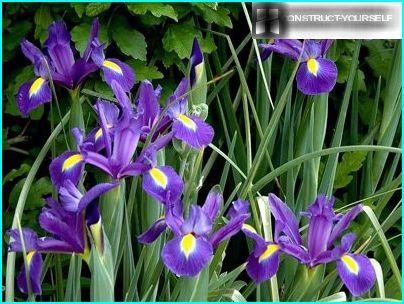
A couple of years reticulate irises grow tall shrubs, so they can become the center of any multi-tiered flower beds, but for a rich flowering them periodically you have to share
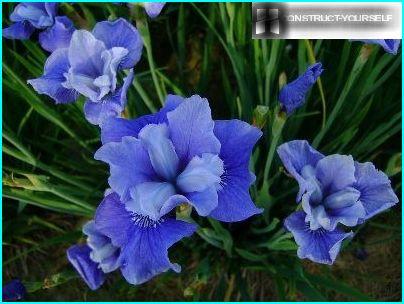
Siberian iris has been especially grown for the harsh climate, therefore, does not require shelter for the winter and specific heat of the summer
Perennials with decorative foliage
In a couple of flowering plants should be added, and perennials with decorative foliage. They will create a background for flower beds and take the place wither the plants when they begin to lose a beautiful view. Among the most spectacular and picky can be called hosts, astilby, Badan, liatris, ground pestrolistye, different types of blasting and betulinic.
Well in Siberia, flowers-perennials, which before flowering and after it do not lose the spectacular foliage. This is chrysanthemum, rudbeckia, Phlox, doronikum.
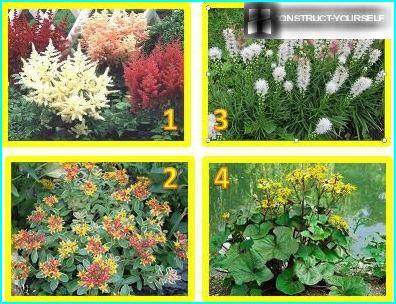
In the photos are: 1 — astilbe assorted colors, 2 — cleaning, 3 liatris, 4 — botulinic. They can be combined, creating several layers in flower garden
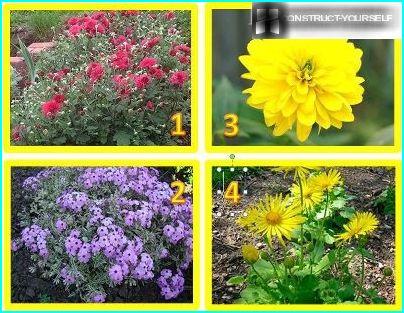
A real adornment of the Siberian or Ural flower garden can become:
1. — chrysanthemum, 2 — Phlox, 3 — rudbeckia, 4 — doronikum
Especially for Siberian conditions grown special clematis – clematis burning. It is so hardy that requires no winter shelter.
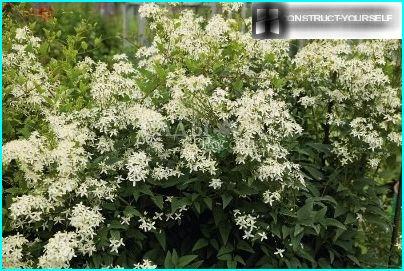
Clematis burning different from other types of clematis with small flowers that pour the summer of the Bush, like a little pointed stars
But the most spectacular, of course, there will be roses. In cold climates survive successfully grafted on wild rose varieties that are hardier and stronger than own-rooted. The most low-maintenance gardening and a floribunda. Read more on video:






